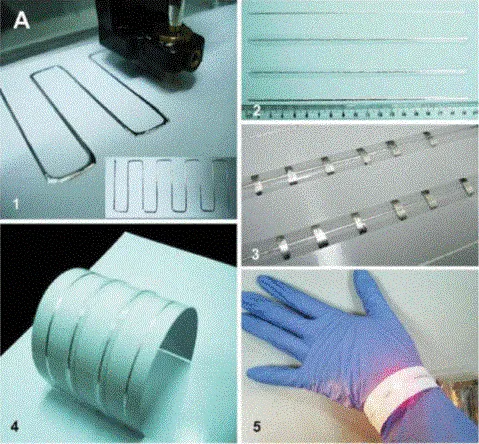Technologies for Printing Sensors and Electronics Over Large Flexible Substrates: A Review
Printing technologies are aiding and revolutionizing the field of flexible sensors and electronics by providing cost-effective routes for processing diverse electronic materials at temperatures that are compatible with plastic substrates. Simplified processing steps, reduced materials wastage, low fabrication costs and simple patterning techniques make printing technologies very attractive for the cost-effective manufacturing.
A large variety of materials have been studied for achieving the purpose. Conducting materials like Silver (Ag) based pastes and solutions are considered excellent but costly. Carbon and copper based inks are used, but the oxidation of copper based inks after printing does not serve the purpose well. Mimicking metallic conductivity, crystalline organic conducting materials were investigated. Nanocomposites made by mixing of metallic nanoparticles with organic elastomers are also developed for printing. Due to unique electrical, mechanical and optical properties, the printable solutions of graphene and carbon nanotube are used for flexible electronics. The transduction of free carriers within the semiconductor dielectric interface makes organic and inorganic semiconductors very favourable. To replace planar rigid substrates, the flexible substrates are required to possess properties such as dimensional stability, thermal stability, low coefficient of thermal expansion, excellent solvent resistance and good barrier properties for moisture and gases.
The main categories of printing include contact and non-contact printing.Non-contact printing includes screen printing, inkjet printing and slot-die technique printing. Screen printing has controlled deposition with fast speeds. Desired pattern is defined by open area of mesh. Inkjet printing is thermal, piezoelectric and electrostatic driven printing. Ejection of droplets for printing is carried out by using different actuation phenomenon. In slot-die technique, it first establishes steady and uniform coating flow and then adjusts gap between slot die and moving web. Screen printing requires high viscosity and is unable to form high resolution uniform line patterns, whereas inkjet requires low viscosity and has low material wastage. But it faces pixilation issues.
In contact printing, gravure printing utilizes direct transfer of functional inks through physical contact of the engraved structures with the substrate. For offset printing, elastic blanket roll picks up the ink from the grooves of the gravure plate and transfers it to the target surface. Patterns are raised on low-cost flexible plate using photolithography in flexographic printing. In micro contact printing, stamp is inked and put in contact with the substrate surface and transfer occurs at point of contact. Transfer printing, a combination of photolithography and micro contact printinguses wires and membranes realized on SOI or bulk wafers using standard photolithography.
Every technique has its own advantages and disadvantages and is used in such a way that advantages are maximised.
The cost-effectiveness of printing technologies and employing them for flexible electronics will enable new classes of applications, and dramatically change the electronics industry landscape. Printed electronics and sensing will also have a major societal and economic impact with skilled labour from print industry gradually start developing printed electronics.




